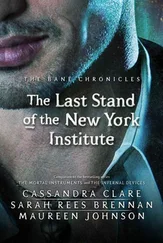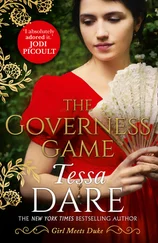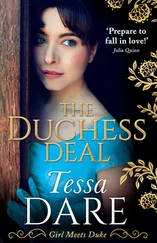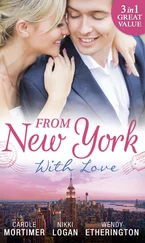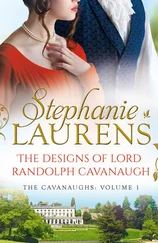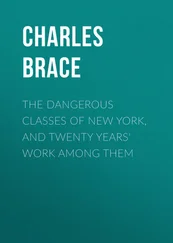After all, one of my stories in the Press had drawn the managing editor himself out of his office to make a rare appearance in the city room. The legendary M. M. “Crow” Kesterson (it was whispered that his initials stood for Montmorency Maximilian, but one did not address him as such), who wore a neatly pointed gray mustache and sleeve garters, à la the editors from the golden age of journalism, shook my hand as he praised the lead of my feature on a woman who planted rosebushes in her garden that multiplied into more rosebushes. My opening sentence was “A rosebush is a rosebush is a rosebush in the garden of Mrs. Henry Frampton of 2245 Euclid Avenue.” As he grasped my hand firmly in his own, Kesterson said, “Congratulations. You are the first person to ever get Gertrude Stein into the pages of the Grand Rapids Press .”
How could I fail to make it in New York?
Now I had another question. How could I hope to land a job if I couldn’t even get past the receptionists? In desperation, I called home—not my parents but my favorite high school teachers. Jean Grubb, the journalism teacher who got me my first professional job, as our high school sports correspondent for the Indianapolis Star , had no contacts in New York. Nor did my first boss at the Star , the talented Corky Lamm, who had tried to crash the gates of New York journalism fresh out of college but ended up with a dull job at an insurance company and retreated back home to Indiana. I tried Dorothy Peterson, the history teacher whom so many in my class had looked to for guidance beyond the classroom. Miss Peterson had a friend from her own college days at DePauw who, she said, was in the newspaper business in New York. She would call him and suggest that he see me, at least to give me advice, if not a job.
For the first time, I got beyond a receptionist. In fact, I landed in the inner sanctum itself. The man behind the enormous desk was absorbed in reading my story of the multiplying rosebushes. The only sound in the plushly carpeted room was the muted stutter of a Dow Jones stock ticker, which looked like a small telegraph key inside an elegant bell jar with a gold base, set on a corner of the long desk. Miss Peterson’s friend had not only agreed to see me but was actually interested in reading the clippings in the now dog-eared manila envelope I clutched to my chest like a life preserver. The man was Barney Kilgore, publisher of the Wall Street Journal .
Kilgore swiveled in his chair toward me, looked up from the clipping, and said, “Did you write this?”
I said I had.
“And the others too?”
He held up the manila envelope.
“Yes, sir,” I said.
Kilgore’s head jerked sideways in a twitching motion, a nervous tic that was one of the idiosyncrasies for which, I learned, he was famous. He was more justly famous as the brilliant journalist who became publisher of the Wall Street Journal at age thirty-nine and, with the acquisition of regional printing plants, was credited by Time with transforming a “dull financial sheet” into “one of the best U.S. newspapers.”
I had heard that Kilgore was also renowned for making conscious use of his Hoosier background. He tried to pass himself off as a hick, wearing loud, hand-painted ties with unmatching shirts, and suit jackets that didn’t go with the pants. It was said that Kilgore believed this approach disarmed his sophisticated New York competitors and gave him an edge in whatever he was doing, which was usually successful.
A friend on the Journal told me Kilgore once showed up in the city room without warning, and a new cub reporter handed him a story to take down to the printer, thinking Kilgore was a copy boy, one of those aging fellows in cast-off clothes who was lucky to get a job, roughly equivalent to a messenger. As well as dressing the part of a bumpkin, Kilgore spoke in a country-boy lingo, with a twang that made Will Rogers sound almost British by comparison.
“You’re from Indiana,” Kilgore said to me with approval. “You’ll do all right in New York.” His head yanked into a tic and he added, “Some of these New York fellas, they don’t do so good here.”
Kilgore explained that as publisher of the Journal he no longer got to do any “real” newspaper work, and that was what he loved most of all—getting his hands smeared with printer’s ink and putting out a paper, in the old-time tradition of William Allen White and the great country editors. To remedy this, he had just bought his hometown weekly in Princeton, New Jersey, where he could do all the tinkering and puttering in the pressroom, or anyplace he wanted, without union restrictions. He offered me a job as reporter on the Princeton Packet , “New Jersey’s Oldest Weekly,” at the princely salary of $70 a week.
I was thrilled at the offer—my first full-time job in the postcollegiate, real world. The drawback was I’d have to live in suburban Princeton, a college and commuting town, rather than the one place in the world I wanted to be, New York City. But at least I was less than an hour away by train, and I could come up every weekend to be in the city and breathe the air that would keep my spirit alive. I accepted Kilgore’s offer with thanks and gratitude. It was, after all, the only one I had, and I felt Barney Kilgore was a good guy even with his idiosyncrasies, which included (in my current view) not only his twitch and his Hoosier mannerisms but also his Indiana Republican politics. Whatever our differences, I knew he would treat me fairly and well, and he did.
When I told C. Wright Mills I’d taken a job on a weekly paper in Princeton, he puffed on his pipe, shrugged, and said, “Small-town stuff. You’ll be back.”
He was right, of course. I came back sooner than even I had hoped, courtesy of a job offer from Mills himself. In the meantime, I was proud and relieved to tell my parents I had not only graduated from college—I had a job.
As I found out, getting your first job in New York wasn’t easy, and some of us realized the challenge while still in college and wisely planned ahead. Because of my injury from the auto accident, I was not eligible for the draft, but other young male college graduates faced two years of military service that further complicated their career plans. Max Frankel, the ace Columbia correspondent for the New York Times , was hired by the paper when he graduated, but the draft was hanging over him.
“I was terrified that if I left for two years in the Army, no one at the Times would remember me when I got back,” Frankel says. “But there was a law that if you had a job for one year and you were drafted, they had to take you back when you returned from the service. I went to my draft board and got a year’s deferment to get an M.A. in political science, then asked the Times if I could have my two days off in the middle of the week—I could take a full load of five courses by going to class on Tuesday and Wednesday.”
When Max returned from two years of Army service, a guaranteed job at the Times was waiting, and his first assignment was police reporter. “My first year I was in the police shack, hanging out with guys who only covered cops. I rode around with these guys who had guns in their glove compartment and talked rough cop talk. The newspaper scene in New York then was vibrant. It was hotly competitive, with papers of every conceivable stripe, from the World-Telegram , which was sucking up to the establishment, to the Hearst papers, the Mirror and the American . The Daily News was a terrific tabloid, and we also had the liberal Post . There was very little TV then.”
Few of us planned our careers so well ahead. If we had no previous experience or connections, we turned to family or friends. Just as I got my job with the aid of my high school history teacher, the future novelist Bruce Jay Friedman got his through what he calls “the Bronx mothers’ Mafia.” After a hard day of making the rounds of employment agencies when he came home from the Air Force in 1953, Bruce had dinner with his mother at the House of Chan in Manhattan. “We were having those drinks everybody used to have then, the ones with the orange slice and the cherry, when my mother spotted this woman she knew from the neighborhood sitting at the bar. My mother invited her over to our table and introduced me. She said, ‘This is my son, and he wants to get started in writing.’ This other Bronx mother nods and says, ‘My son-in-law works for Magazine Management Company. He’d love to meet your son, maybe he could help him.’
Читать дальше

